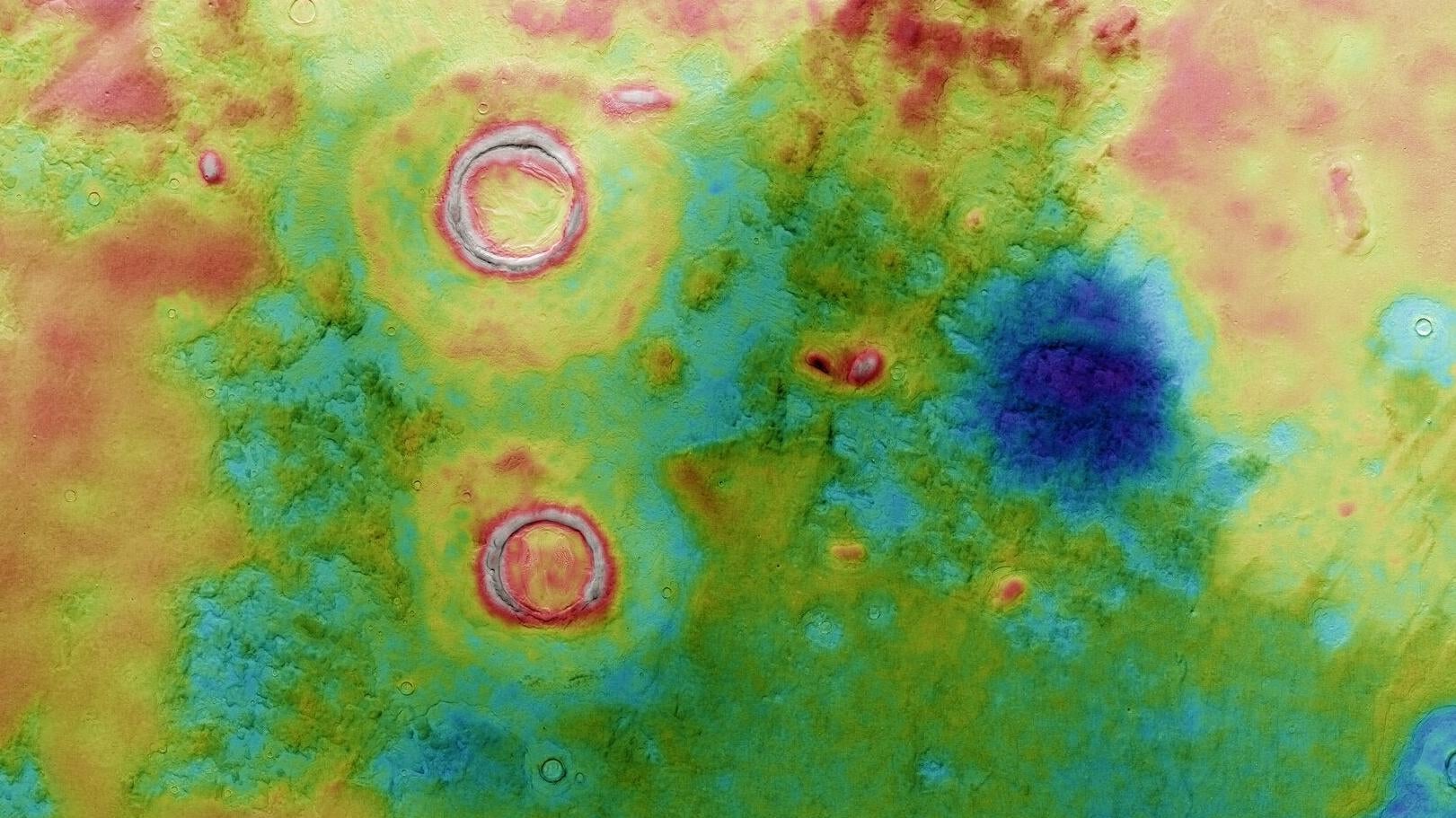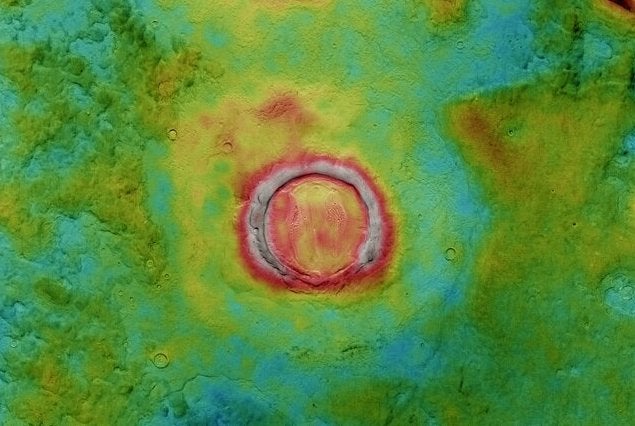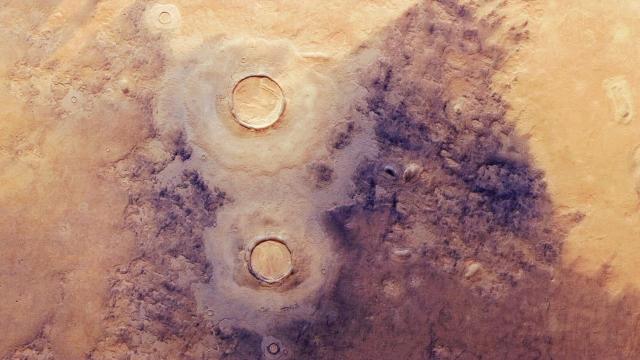Recent images captured by the European Space Agency’s Mars Express orbiter reveal large craters in Utopia, the largest known impact basin in the Solar System.
Utopia is about 3,299 km wide — roughly the distance from London, England to Alexandria, Egypt. These striking geological features are located in Utopia Planitia, a massive lava plain that is now rich with ice that sits on and beneath its surface. (Utopia Planitia is also where China’s Zhurong rover landed nearly one year ago; the rover has spent its time driving around the vast plain and taking selfies).

Zipping above the Martian atmosphere, the orbiter and its High Resolution Stereo Camera captured two craters on the lava plain. The topographical image, below, was created from data collected by the orbiter in July but only recently produced and shared with the public in an ESA release. On either side of the craters are flat surfaces called mantled deposits, which are layers of dust and ice that probably originated from ancient Martian snows, when the planet’s rotational axis had a more severe tilt than it does today.

One of the craters (toward the bottom of the image) has ‘brain terrain’ inside it, so-named for its resemblance to the ridges of the human brain. If you look closely, you can make out the undulating ridges within the crater.

There are several ideas about brain terrain’s origins; one leading theory is that the terrain comes from buried water that sublimates, weakening the Martian surface and giving it a rippled look. It’s hard to deduce how the geological feature forms from Martian orbit, but some brain terrain on Earth may offer clues.
Adjacent to the craters in the Mars Express images is a swath of darker material; ESA researchers believe that icy ground cracked in places, which allowed dust blowing around the planet to settle in the cracks.
For all its burnt reds and hazy yellows — all too reminiscent of a terrestrial desert — Mars is a frigid (albeit dynamic!) wasteland of carbon dioxide, dust, and ice. Observing from space can only offer so many insights; the more robots we land on the planet, the more we’ll understand the geological and hydrological process of the Red Planet.
The Perseverance rover has noticed some interesting details about how Jezero Crater took shape over millions of years, and the planned ExoMars Rosalind Franklin rover — still alive but barely breathing — is supposed to dig into the Martian soil, perhaps revealing insights even InSight couldn’t deliver.
Brain terrain remains an intriguing aspect of the Martian surface, and with more boots — erm, wheels — on the ground we may figure out exactly what causes it.
More: NASA and ESA Change Plans for Ambitious Mars Sample Return Mission
